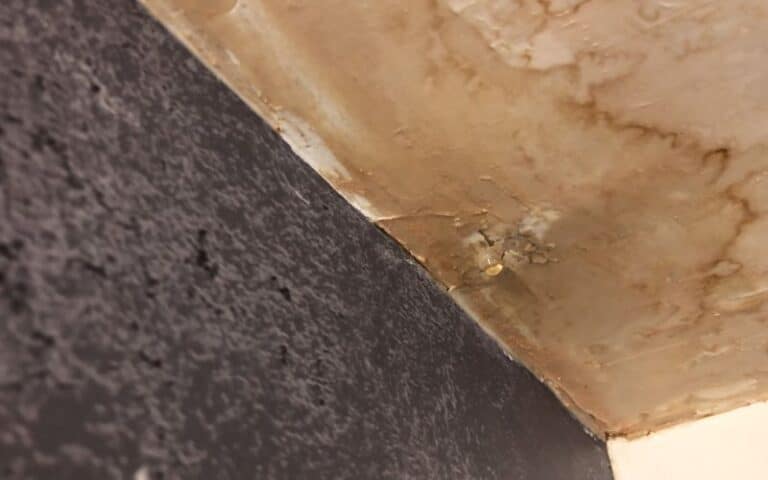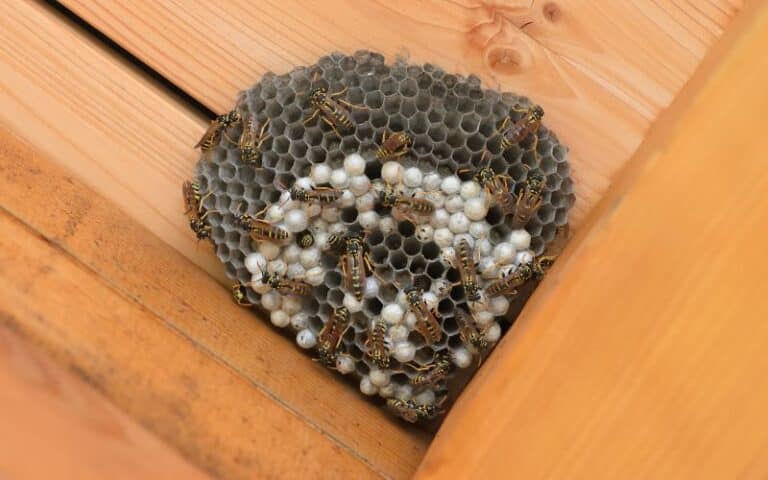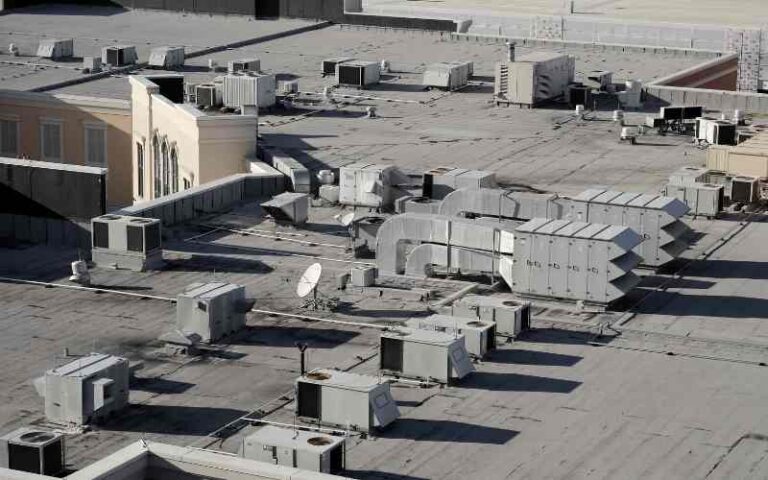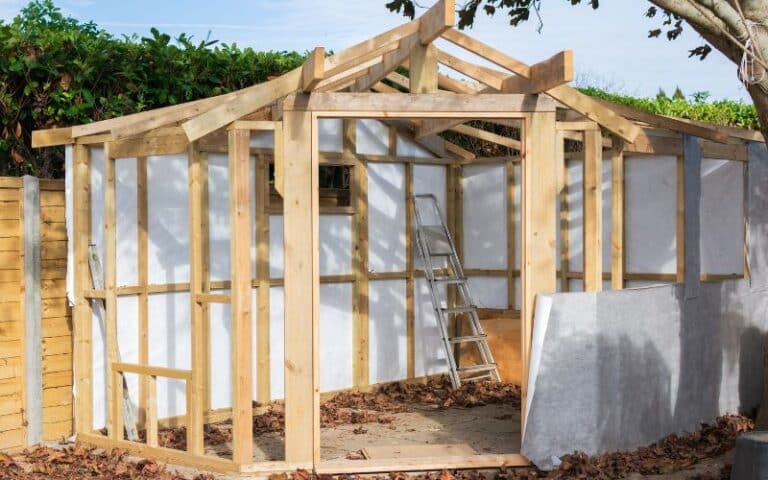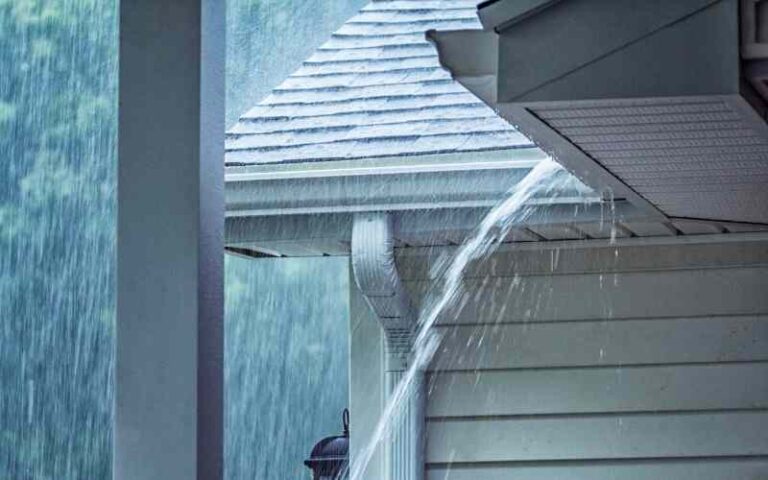What is the essence of a house without a roof? No doubt, a good home deserves a worthy roof over it. But have you wondered why roofing tar paper is now a trend?
The reason is that it is durable and it serves as waterproof and protection.
Thus, you should use roofing tar paper when constructing your home. It makes your home warm in the winter and cool in sunny weather.
It can also resist the rays of the sun. But despite the benefits of roofing tar paper, is tar paper flammable?
Roofing tar paper is flammable but not very flammable. You should instead refer to it as combustible. Roofing tar paper is combustible in higher temperatures. This is a felt tar paper combined with tar coatings embedded in a fiberglass mat. Nonetheless, roofing tar paper will not flame up when exposed to lower temperatures
Ready for a Roofing Quiz?
What Is The Formulation Of Roofing Tar?
As simple as making roofing tar is, it’s a dangerous ‘Do It Yourself task. The ideal thing is to involve a roofing expert in the process.
The mixing can be harmful when the material is the wrong one.
Roofing tar is a formulation of petroleum based-products and refined coal. Recently, roofing tar is made with miner’s fillers, surface adhesives, and plastics.
Roofing tar is available in various colors like silver, deep brown, and black.
#1. Components of Roofing Tar.
The below listed are the materials that form roofing tar.
#1. Petroleum-based products.
Petroleum based-products are crude oil extract. They are a complex mixture and are processed in refineries. You can transform them into fuel oil and heavier oil.
The fuel oil consists of gasoline, jet oil, diesel, heating oil, and kerosene. However, heavier oil makes asphalt, tar, and paraffin wax.
#2. Refined coal
Refined coal is products evacuated from sub-bituminous and lignite (brown) coals by increasing their calorific value.
It is a coal-upgrading process to eliminate dampness and some impurities with the aid of a chemical spray.
#3. Miner fillers
These are the items used by miners. They can be soil, crushed stone, or waste materials used for a concerned area’s hardness, thickness, and smoothness.
#4. Surface adhesive
This is the attachment of different surfaces. It is a method of cementing surfaces that are not similar to joining them together.
This is a process whereby a non-metallic material is added to two surfaces to resist their separation.
#5. Plastics
Plastics are primarily made from polymers. They are synthetic materials that can be recycled, molded, expanded, and compressed.
Related: Does Roofing Tar Freeze?
Is Roofing Tar Paper Toxic?
Roofing tar paper is laid on the roof under the shingles. Then, it is applied between the roof deck and the roofing shingles. It is also known as roofing felt tar paper or underlayment.
It makes the roof durable and serves as a waterproof that protects the roof. The underlayment drip edge is composed of natural materials such as fiberglass and cellulose.
Despite these benefits, people get worried about its safety. Is roofing tar paper toxic?
Roofing tar paper is not toxic when you use it in normal circumstances. Therefore, it is not a toxin or carcinogen.
Nonetheless, roofing tar paper is toxic during the heating and burning process. In addition, it expels chemical substances that threaten your health when you install it.
When installing the roofing felt tar paper, you should tread carefully around it because the roofing shingles contain asphalt. Asphalt is a formulation of petroleum-based products.
However, you can install roofing tar paper without heating or burning. All you need to do is roll it flat.
Then, lay the tar paper on the tile and clip it with roofing nails with the aid of a rivet machine.
This technique will reduce the risk that comes with the heating of torch-on tar paper. You can also apply this process when there’s a leak in your roof.
Furthermore, another issue that makes people scared of roofing tar paper is the presence of asbestos in the tar paper. There’s a claim that asbestos contains chemicals toxic\ to the body.
Though it is known to be effective, affordable, and make roofing tar paper strong. But it is a hazardous building material. In the past, you may find asbestos in roofing tar paper.
But modern tar paper may not contain asbestos. So, rest assured of your safety. It won’t be toxic when you use roofing tar paper as directed.
Related: Does Roofing Tar Get Hard?
What Is Roofing Tar And Tar Paper?
Roofing tar paper is also known as roofing felt tar or underlayment laid between the roof deck and the shingles. It is covered in tar coatings which are made from crude oil.
It makes the roof last longer. It has two sides, one is sticky, and the other is smooth.
Tar paper is different from tar felt. But they are used as synonyms. Tar paper is made with tar, unlike paper felt, made from asphalt.
Aside from this, you can use tar paper for art projects like paintings. It also acts as an ice water shield. So it’s an excellent choice for a dampness barrier.
Meanwhile, roofing tar is a liquid substance. It is derived from plenty of varieties of organic materials. Roofing tar is a component of petroleum based-products, refined coal, surface adhesives, and plastics.
It makes the roof durable. It can be painted to blend with the roof and is available in a few colors like silver, deep brown, and black.
Roofing tar is an oily mixture that is mainly used on flat roofs. Also, roofing contractors use it as an adhesive. An underlayment’s edge and some materials are laid over it.
Roofing tar is a thicker layer with asphalt gravel as waterproof or protection.
We can also use roofing tar to mend potholes and fix leaks on a flat roof. In addition, it’s useful for roof protrusions and sealing valve pipes to last longer.
Moreover, the usage of roofing tar for slanted roofs isn’t appropriate. The reason is that it’s applicable when it’s thin, but it will slope. And it can’t be used when it’s cold due to the stiffness.
Related: Is Roofing Tar Paper Flammable?
Is Roofing Tar And Tar Paper The Same?
There is a considerable difference between roofing tar and roofing tar paper.
Roofing tar is an oily mixture applied on a flat roof or floor to serve as waterproofing, while tar paper is embedded in tar coatings.
Roofing tar is a liquid substance, but tar paper is a heavy-duty building construction tar paper used in the building process.
Roofing tar consists of surface adhesives that work to glue surfaces together, while you can clip tar paper with roofing nails.
Is Tar Paper Hazardous?
Yes, when it’s not in a normal condition. For example, asthmatic patients or those with lung problems should try to avoid breathing the roofing tar smell. It also irritates the respiratory organ.
Additionally, tar paper expires. However, it has a lifespan of about 15-30 years.
So, it is advisable to take note. Because when it is due, the roof will be exposed to leakages often.
Also, the underlayment drip edge will begin to depreciate. As a result, it is hazardous when we use it in the rain.
The effect is a primary reason why roofing experts avoid installing it during rainy seasons.
Conclusion
The roof of the house is as essential as the foundation. Application of roofing tar paper as directed will make your roof durable.
However, roofing tar is flammable but not very explosive.
Therefore, it is not considered a carcinogen but can be toxic during heating and burning. But this can be prevented by clipping it with roofing nails.

